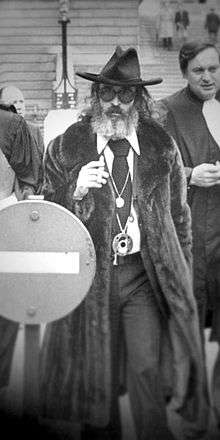Fernand Legros

Fernand Legros (French: [ləɡʁo]; 26 January 1931 – 7 April 1983) was an art dealer who, together with his lover Real Lessard, sold the art forgeries of Elmyr de Hory.
Biography
Legros was born in Ismaïlia in the Kingdom of Egypt. He first wished to be a ballet dancer. After World War II he moved from Cairo to Paris. He married an American woman, possibly as a way of gaining US citizenship; Legros was homosexual.
Legros met the painter and art forger Elmyr de Hory in the 1950s when they were rooming in Miami in a house of a mutual acquaintance. He had recently come from France without his wife. Legros was apparently impressed by de Hory's skill and persuaded him to be his agent for a 40% cut.
In the following years the two men traveled all over the US and sold De Hory's paintings to galleries. Legros kept most of the profits without telling De Hory. Legros also befriended French-Canadian Real Lessard and they began an uneven relationship. Legros occasionally accused Lessard of infidelity, although he himself slept with other men.
De Hory eventually grew tired of the men and Legros' volatile temperament and moved to Europe. Next time he ran into Legros in Paris where Legros asked him to give him some of his paintings. When de Hory explained that his paintings were locked up in New York hotel, Legros proceeded to acquire them. He sold them in the international art market.
Year later, de Hory met Legros again and begun a new business relationship with him. Legros and Lessard would sell de Hory's painting and give him $400 a month plus an occasional bonus. They arranged de Hory to move to Ibiza in 1962. Legros and Lessard kept most of the profits and soon moved to a luxurious suit in Paris. They also built a villa for de Hory in Ibiza.
Legros sold the paintings with forged certificates. He fooled a number of US collectors, including Algur H. Meadows of General American Oil Company. Sometimes Legros and Lessard would acquire old art books and replace the attached pictures of the real paintings with those of de Hory's forgeries. After a lengthy trial in Paris, Legros was sentenced to four years in prison and was immediately set free, having already spent an equivalent time in various jails.
Sometimes Legros would cross the US border and when the customs checked his luggage, he said that the paintings were just copies. US customs officials contacted art experts to verify it. The expert decided that the paintings were actually genuine and Legros would be liable for a toll. Later Legros used the US customs documents to verify the authenticity of the paintings.
In 1964 figures in the art market became suspicious and police begun to close in. Legros and Lessard moved to Zurich and sent de Hory to Australia for a year. Later Legros moved into Ibiza and evicted de Hory. Shortly afterwards police apprehended Legros and Lessard, charged them with forgery and fraud. The men were given prison sentences.
Legros died of throat cancer in Chasseneuil-sur-Bonnieure.
In popular culture
- Fernand Legros was the inspiration for the character Endaddine Akass in the unfinished Adventures of Tintin album Tintin and Alph-Art.
References
- Peyrefitte, Roger (1976). Tableaux de chasse ou la vie extraordinaire de Fernand Legros. ISBN 2-226-00262-6.